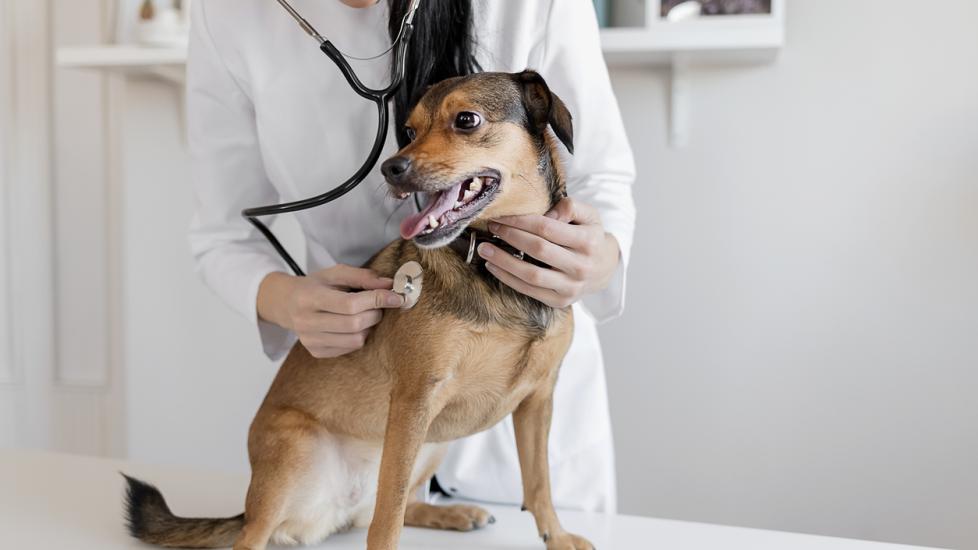When 'Doing No Harm' is Not So Clear-Cut
Primum non nocere is a Latin phrase that translates to "first do no harm." This is the fundamental belief ingrained into doctors that, no matter the situation, our primary responsibility is to the patient.
The origin of the saying is uncertain. Examining the Hippocratic Oath, the words uttered by physicians as they are sworn into medical practice, we find the expression “to abstain from doing any harm.” Though close in inference, this phrase lacks the impact associated with ensuring that the first and principal consideration is the patient.
Ultimately, “first doing no harm” means that in some cases it may be better to not do something, or even to do nothing at all, rather than create unnecessary risk.
Veterinary medicine is no exception to the principle of primum non nocere. Like all doctors, I am expected to maintain the best interests of my patients above all else. Yet, unique to my profession, my patients are the property of their owners, who are the individuals responsible for decisions regarding their care.
One could argue that medicine is medicine regardless of the species. Critical patients need stabilization. Sick patients need remedies. Suffering patients need relief. Literal translation of the quote is not the problem. Difficulties arise when my ability to provide care for my patients is questioned by an owner, or when they surprisingly request treatments I feel are not in their pet’s best interests.
As an example, most dogs with lymphoma are often diagnosed “incidentally,” meaning their owners (or veterinarians, or groomers) detect enlargement of their lymph nodes, but the pets are otherwise acting completely normally at home and feeling well.
Some dogs will have some minor clinical signs associated with lymphoma, and an even smaller subset will be exceptionally sick at the time of their diagnosis. Cats with lymphoma seem to show signs of illness more frequently, and their diagnosis is usually made at what would be considered a fairly advanced stage of disease.
Patients who are “self sufficient” — meaning they are eating and drinking on their own, and are active and energetic — are much more likely to respond to treatments and much less likely to experience adverse side effects compared to those who are sick. Therefore, it’s remarkably easier to recommend treatments to owners of pets showing no signs related to their diagnosis than to those who are. My confidence for a good outcome for such a case is high and my concern for doing harm to that pet is minimal.
For sick patients, I definitely struggle with the clichés of knowing “how much is too much?” and “when to say when?” My logical mind understands that if we do not try to treat the underlying cancer, the patient has no chance of improving. Yet, this is exactly when the concept of primum non nocere enters my mind.
If the code of ethics I’ve vowed to uphold tells me I shouldn’t advocate anything that would cause harm to my patients, how can I determine what is reasonable to recommend and what crosses the line?
My mentor during my residency would often say, “You have to break a few eggs to make an omelet.” Though the wording may seem crass, the take home message was simple: There will be times when patients will become sick directly because of a decision I made about their care.
Of course, I also observe the opposite end of the spectrum: owners who seek approval to not move forward with treatments even when a good outcome would be nearly certain.
I’ve encountered many dogs with osteosarcoma whose owners refuse to amputate because they fear this surgery would ruin their pet’s quality of life. I’ve sat before countless numbers of owners who elect to bypass chemotherapy for their pets with lymphoma for fear that their lives would be miserable during treatment. I’ve euthanized animals where we were suspicious of a diagnosis of cancer, but made insufficient attempts at proof because owners are consumed with concern about what their pet would “go through” during testing.
As a veterinarian I interpret primum non nocere with a certain twist. I will tell owners, “Just because we can, doesn't mean we should.”
Advances in veterinary medicine afford opportunities to treat diseases previously considered incurable. We have specialists in nearly every field imaginable. We can place pets on ventilators. We can perform cardiopulmonary resuscitation. We can remove organs and even transplant kidneys. We can perform diuresis. We can give transfusions. And yes, we can even give pets chemotherapy to treat cancer.
All of these advancements make me consider my counsel, “just because we can, does that mean we should?” How do I decide if it’s more injurious to treat a patient versus not treating them? When it comes to health care in pets, who ultimately defines “causing harm”? It’s not an easy concept to answer, and I’m certain that I’m not the only one who struggles with the question.
My responsibility and training tell me it’s my job to be my patient’s best advocate, even when that means disagreeing with their owner’s decisions; even when I know there is more I could do, but cannot do because of external constraints placed on me.
Even when it means I not only first do no harm, but also do nothing at all.

Dr. Joanne Intile
Featured Image: iStock.com/PixelsEffect
